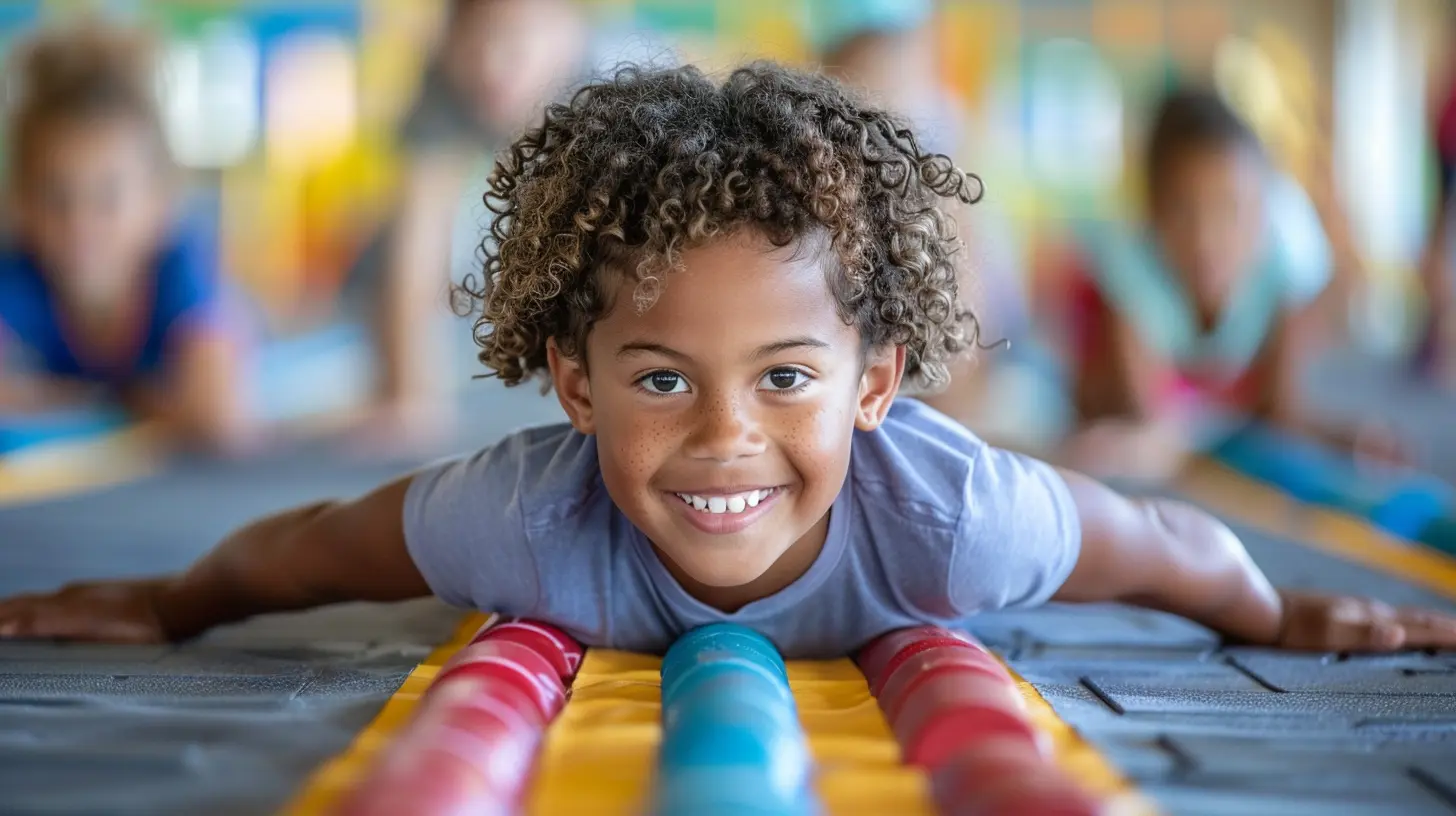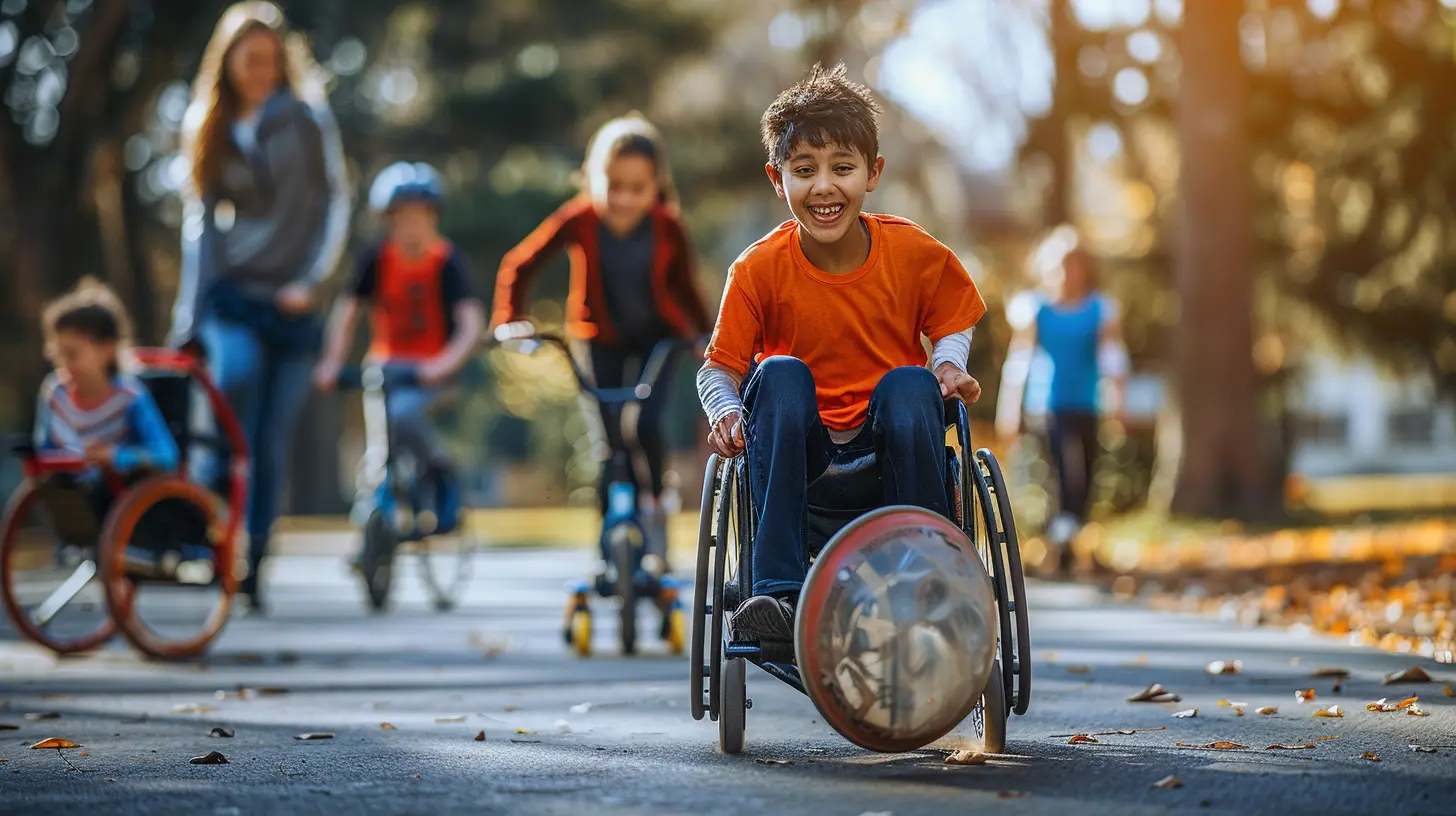How to Create Inclusive PE Activities for All Skill Levels
8 November 2025
Let’s face it—Physical Education (PE) can be a blast for some students… and a nightmare for others. We've all been there: the excitement of dodgeball for one kid might be the anxiety trigger for another. Whether you're a teacher, coach, or even a student helping out with a younger group, inclusive PE is something we seriously need to talk about.
Anyone can throw cones on a field and call it a game. But designing PE activities that include everyone—from the most athletic kids to those who are just figuring out how to throw a ball—is a different story. And it's an important one.
So, how do we make PE more inclusive? How do we ensure every student leaves class feeling successful, not sidelined? Stick with me, and let’s break this down like a coach calling a timeout in the final seconds of a close game.
Why Inclusivity in PE Really Matters
Before we jump into the “how,” let’s talk about the “why.”PE isn’t just about kicking balls and running laps. It’s about teaching kids teamwork, encouraging healthy lifestyles, and giving them a mental boost. When a student feels left out because they can't keep up or aren’t confident in their skills, they miss out on all those benefits.
And trust me—kids remember.
One bad experience in PE can lower a student’s confidence in physical activities for years. On the flip side, a positive and inclusive experience can build a lifelong love for movement and fitness.
So, yeah. This is more than just games. It’s shaping lives.
Understand the Starting Line: Knowing Your Students
Imagine trying to run a race without knowing where the starting line is. That’s what planning PE lessons without understanding your students feels like.Start here:
➤ Assess Skill Levels Early
Don’t assume everyone starts with the same skillset. Some kids may have played team sports for years, while others may be learning to throw or catch for the first time. Simple assessments or observation games can give insights into where each student stands.➤ Acknowledge Differences in Abilities
Physical, cognitive, emotional—students come with all kinds of strengths and challenges. Some may have disabilities. Some may be shy. Some may just not like sports (yet). And that's okay.Recognizing those differences is step one in building a truly inclusive class.
Principles of Inclusive PE You Should Live By
Crafting an inclusive PE environment doesn’t follow a strict playbook. But there are a few principles that can serve as your North Star.1. Adapt—Don’t Exclude
If a student can't do an activity the way it's traditionally done, change the rules, the equipment, or the space. But don’t bench them.For example, let's say you're playing basketball. One kid might struggle with dribbling but love passing. So give them a “pass master” role! Everyone contributes in their own way.
2. Encourage Team Support, Not Just Team Spirit
Inclusivity thrives in a culture where teammates cheer each other on. Encourage high-fives, fist bumps, and positive feedback over competition.Make winning about the collective experience, not just the scoreboard.
3. Offer Choices and Autonomy
Not everyone wants to play the same game. Give students options when possible. Let them pick between activities or suggest modifications. Ownership makes them more invested.
Game Changers: Strategies to Make Activities Inclusive
Now the fun part—how to actually make PE inclusive in action. Here are strategies you can use right away:🎯 Modify Equipment
Think about using:- Larger balls for easier catching
- Lighter bats or rackets
- Visual markers for boundaries
- Softer balls for safer throwing games
These small changes help level the playing field.
🌀 Create Tiered Levels of Challenge
Ever play a game with “easy,” “medium,” and “hard” levels? That works in PE too.Let students choose their challenge level. Maybe one version of a game involves walking rather than running, or shooting hoops from a closer line. Everyone gets to participate without feeling like they’re being “downgraded.”
🧃 Simplify Instructions
If your directions sound like game theory homework, you’re gonna lose them. Use simple, clear, and direct instructions. Demonstrate the activity. Maybe even have students act it out.Bonus tip: Use visual cues for students who learn better that way.
🔄 Rotate Roles
Nobody should be “it” for the entire game—or worse, on the sidelines. Rotate roles often. In volleyball, someone can keep score, someone else can be the server, and another person can coach from the sideline. Just keep everyone moving and involved.👫 Mix Up Groupings
Avoid always having the same kids work together. Mix high and low skill-level students so they can learn from each other. And don’t always let the class choose teams. (Let’s end the trauma of being picked last, shall we?)Use counting-off, colored wristbands, or names in a hat to randomize teams instead.
Examples of Inclusive PE Activities That Actually Work
Let’s get specific. Here are some activities that are adaptable, enjoyable, and accessible for all skill levels:1. Parachute Games
Yes, we’re going way back to elementary days—but for good reason. Parachute activities build cooperation, not competition. Everyone holds a section, and they work together to lift, lower, or create waves. Easy to join, hard to mess up, and honestly? Still super fun.2. Buddy Obstacle Courses
Pair students up and let them navigate an obstacle course together. They can help each other through challenges, motivate one another, and build trust.Adapt the difficulty and make sure there are multiple ways to complete each station—crawling under, stepping over, or walking around.
3. Walking Bingo
Great for lower-intensity days or students with mobility differences. Hand out bingo cards with physical actions (e.g., “high five a classmate,” “walk a lap,” “do 5 jumping jacks”). Students check off boxes while moving around the gym or field.Interactive, personal-paced, and inclusive? Check, check, check.
4. Dance or Movement Breaks
Dancing is a universal language. Provide a list of moves students can follow or freestyle to music. Want to make it even better? Let students take turns being the DJ. It builds confidence and encourages creativity.5. Modified Tag Games
Traditional tag can exclude slower runners or students with physical limitations. So tweak it:- Use pool noodles to tag – increases distance and safety
- “Freeze” players can do jumping jacks to rejoin the game
- Everyone wears a flag, but two "its" are blindfolded for sensory play
There are hundreds of ways to remix tag for all body types and abilities.
Tips for Fostering an Inclusive PE Culture
You’ve designed inclusive activities. Great! But the real magic happens when it becomes part of your class culture.✔ Start with an Inclusive Mindset
Set the tone early. Let your students know that your PE class is a space for everyone. Normalize mistakes. Praise effort. Celebrate small wins.✔ Promote Peer Mentoring
Encourage experienced students to support beginners. Not by “correcting” them, but by being a games partner, helping with rules, or just cheering them on.Build that community vibe where everyone looks out for one another.
✔ Check Your Own Biases
We all have them. Maybe you subconsciously expect boys to be better at football, or you assume a quiet kid doesn’t want to lead. Challenge those beliefs. Give everyone a fair shot.✔ Reflect and Adjust Often
Ask for feedback. What do students like? What do they struggle with? Use that input to adjust and improve your approach.Even the best coaches have to switch up their plays now and then.
When Inclusion Feels Messy… Keep Going
Look, inclusive PE isn’t always smooth sailing.You might plan a game with all the right adjustments—only for it to totally flop.
You might have students who push back on the new rules. Or worry that you're lowering “standards.”
That’s normal.
Real change takes time. Inclusive PE is a process, not a quick fix. The important part? You show up, you learn, you try again.
And when you hit the sweet spot? That moment when everyone’s playing, laughing, and feeling like part of the team?
That’s worth every single effort.
The Final Whistle
Creating inclusive PE activities for all skill levels isn’t just about fairness—it’s about building a space where everyone feels they belong, can move how they want, and leave class a little happier and a lot more confident.From modifying games to reshaping how we think about competition, inclusivity is the bridge that connects every student to the world of physical activity.
So next time you plan your class, ask yourself:
👉 Is this fun?
👉 Is this fair?
👉 And most importantly… is this for everyone?
If the answer’s yes, you’re on the right track.
all images in this post were generated using AI tools
Category:
Physical EducationAuthor:

Monica O`Neal
Discussion
rate this article
1 comments
Paris Turner
This article provides valuable insights on making physical education inclusive for students of all skill levels. The practical tips and examples encourage teachers to adapt activities, ensuring every student feels valued and engaged. It's essential for fostering a supportive environment where everyone can thrive. Great read for educators!
November 8, 2025 at 3:48 AM

Monica O`Neal
Thank you for the kind words! I'm glad you found the insights helpful for fostering inclusivity in physical education. Your support is much appreciated!


